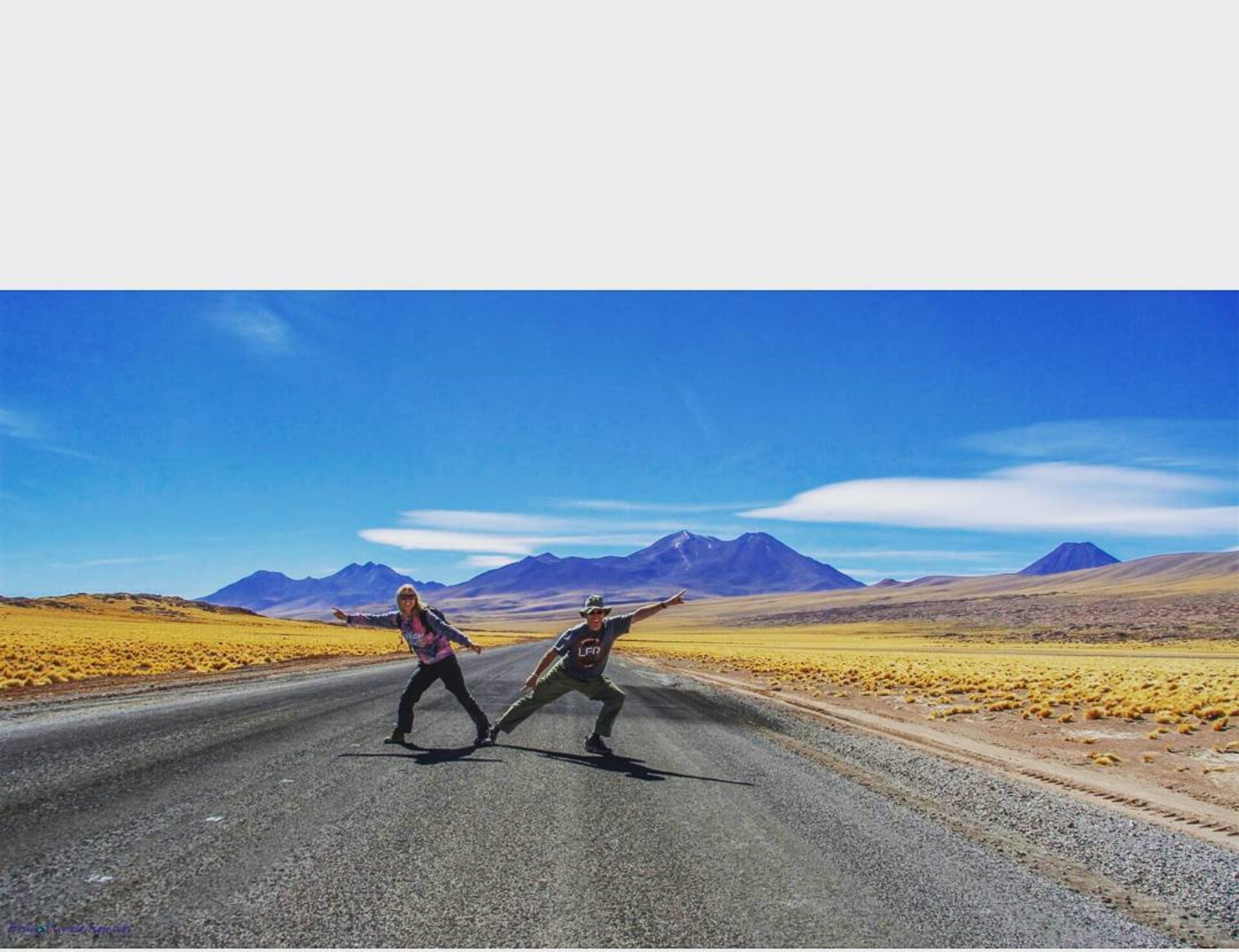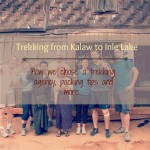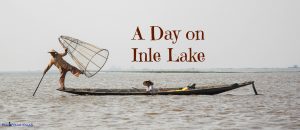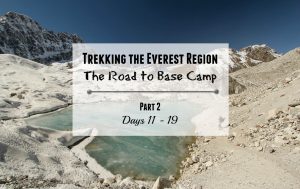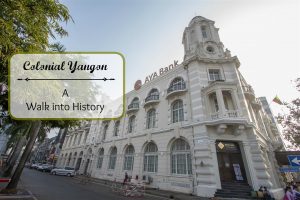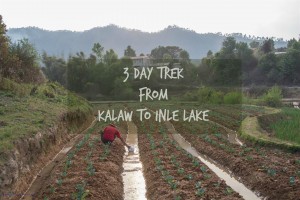[no_toc]
Stepping off the night bus at 3am, we were greeted by cooler weather, darkness, utter silence and one lone motorcycle taxi. Within 20 minutes we were all cosy in bed at our accommodation at Thitlaw II. Kalaw is a popular starting point for trekking, the town itself is elevated at 1320 meters resulting in much cooler temperatures than elsewhere in Myanmar. It was certainly refreshing after a hot and sweaty Yangon.
Choosing a Trekking Company
Before we commenced our trip I had done some research on trekking companies by reading other travellers blogs and reviews on trip advisor. The three most popular are:-
- Sams Family
- A1
- Ever Smile
Sams and A1 seem to stand out the most and after friends of mine tried and tested Sams only a week before and raved about it then Sams Family was the choice. Our guesthouse in Inle Lake also recommended them. I had e-mailed them before going to Myanmar to enquire about the trekking and to reserve a spot. We were on a two week break so had specific dates for the trek. Their response was quick, polite and they gave me all the information I needed so that installed confidence that they knew what there were doing!
Making a booking
If you have a specific date you want to start your trek and want peace of mind then it’s easy just to drop them an e-mail (samtrekking@gmail.com)and make a reservation. Alternatively you can just turn up at their office (central Kalaw opposite the Nepalese restaurant) and make a booking. If you want to leave the next day on a trek then you must be at their office before 4pm the day before. To be honest there is really no issue getting on a trek as they have plenty of guides! although we did go in shoulder season (March) so not sure what peak season is like but I still don’t think there will be an issue.
Group or private?
You have the choice of having your own guide or you can team up with others to make up a group. The maximum group number is 6 people which is nice, we opted to be assigned to a group. The advantages of going with a group is keeping down the cost, the more in the group the less you pay! we also wanted to have company of fellow travellers on the trek. Of course the disadvantage is you don’t meet these people until the morning of the trek so you have no idea whether you will get along with them or not! We struck lucky, we had a great group (Swiss couple, one Frenchman and a Canadian) and we all got along really well.
The cost of our three day trek for the two of us was 70,000 Kyat ($70)
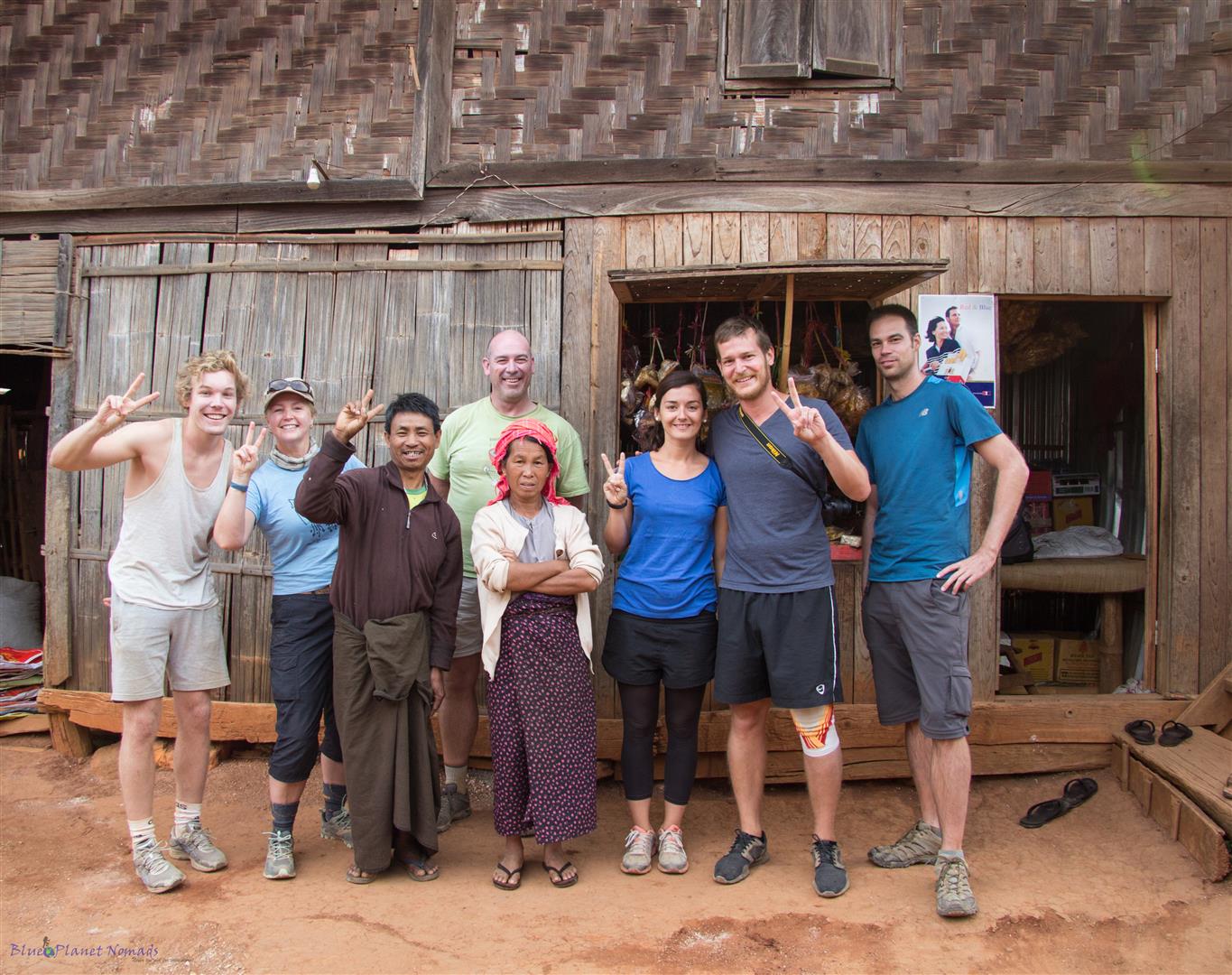
Long Trek or Short Trek?
There are two options for treks:
Two Day trek – Around 37 kilometers for the longer trek and believe there is a shorter version.
Three Day Trek – 3 routes – the longer 62 kilometer route or the shorter 55 or 50 kilometer route.
The longer route is more scenic as you climb up to a viewpoint affording great views across the hills. The shorter routes means you get to spend more time at your host village. We chose the longer route, which did mean more time walking!
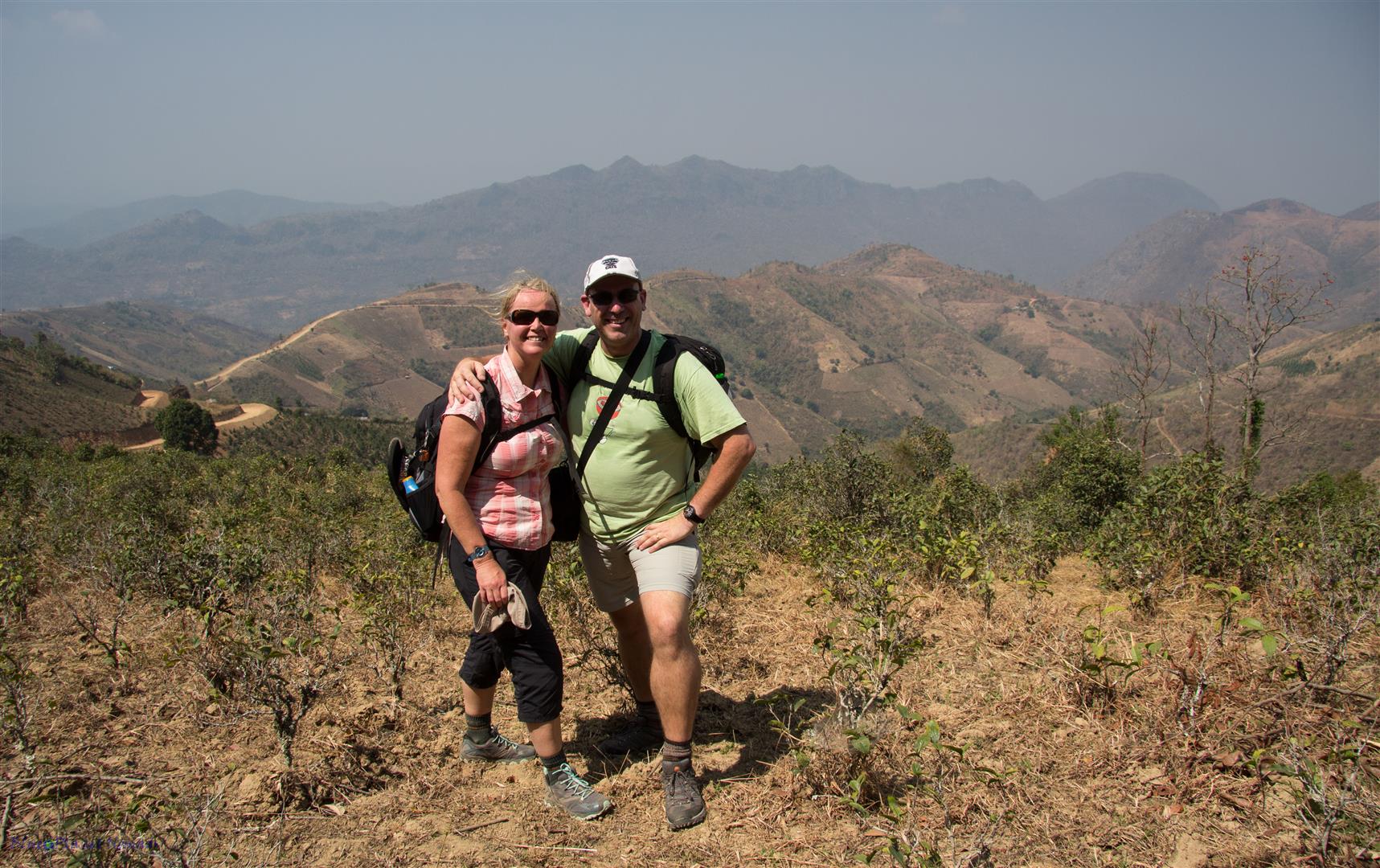
What is included and what is not?
The following is included in your trek:
Guide, accommodation, all meals (except breakfast on the first morning and dinner on the last day) boat transfer to Inle Lake and luggage transfer to your accommodation in Inle Lake.
Not included:
Water, beer, snacks and entrance fee to Inle Lake (12500 Kyat or US$12.50pp). You can buy water and snacks easily along the way from villages, the costs varies between 200 and 400 Kyat for water
It is a good idea to have your accommodation in Inle Lake booked before 4 pm on the day before you commence your trek, it’s a requirement anyway of the trek company as they need to know where to porter your bags too!
We had booked May Guest House (mayguesthouse@gmail.com) which was $30 for a room with attached bathroom. The guest house is lovely and is close to everything.
What is the Trek accommodation like?
To put it mildly its BASIC! you are staying with a host family in a village and life is simple. Your bedding is basically a cotton roll mattress (its hard) on the bamboo floor and you get an equally hard pillow and blankets. As a group you are all together, if you were not friends before you will be after the first night!! The mattress is hard so I added extra blankets for padding. Surprisingly I was comfortable and cosy and we slept rather well.
Toilets were clean and they are squat.
Shower is basically a screened off area outside with a large trough filled with water and a bowl for scooping out the water, basically it’s a bucket wash! The first night it seemed private but the second night the shower was overlooked by the house next door so I lay low! The water is cold but after a 20K dusty hike believe me you really want that bucket wash 😉
At the end of the day you chose to trek so you can experience the local culture and tribal village life.
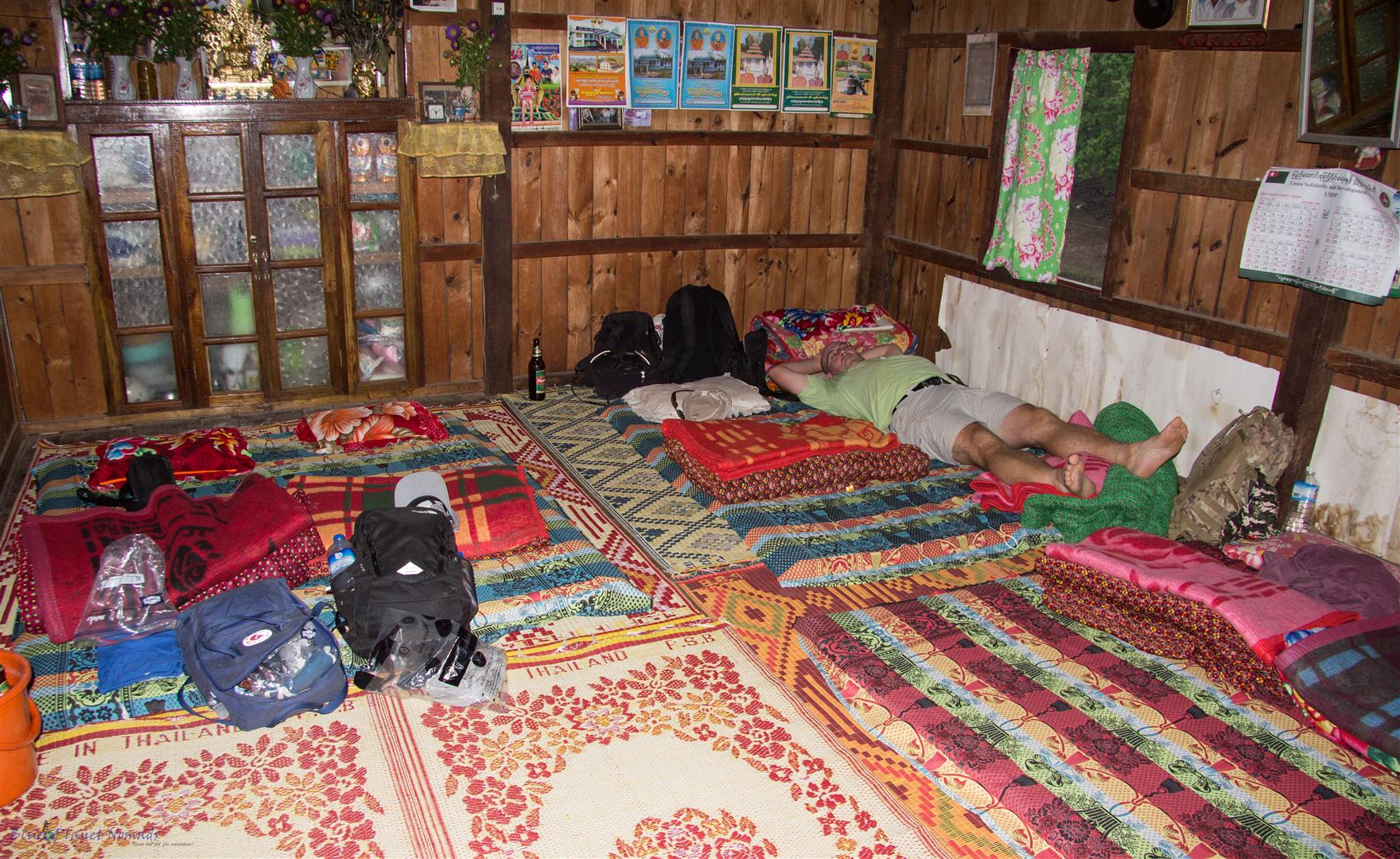
What is the food like?
As part of the trek you will get a cook and he/she will provide all your food, the village hosts do not provide your food. The food was fresh and delicious made with local produce and cooked with fresh herbs and spices. Dishes are Shan style and mostly vegetarian with the odd meat dish. Breakfast is usually omelette, pancakes, jam, fresh fruit, tea and coffee. A typical lunch is a vegetable curry, noodles and other tasty vegetable stir fry dishes. Dinner is a selection of vegetable stir fry dishes, a meat dish usually chicken and rice. You also have the opportunity to have beer once you reached your accommodation.
One thing for sure you will not go hungry!!
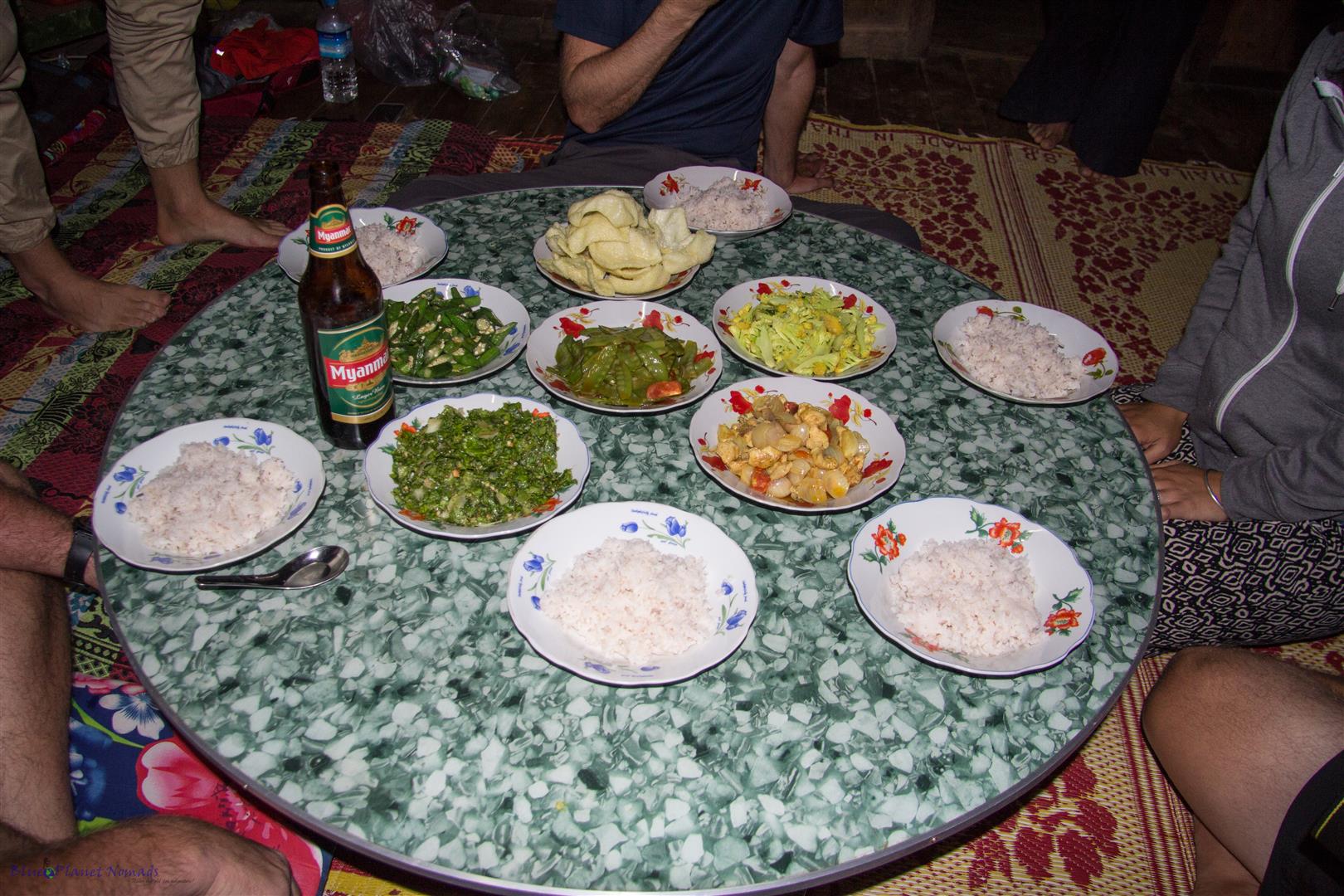
What to pack?
All you need is a day pack, the lighter the better. This is what we packed:-
- Change of underwear and socks
- Change of tea shirt for sleeping and for wearing on the last day
- Cotton Asian elephant/fisherman pants for wearing in the village and for sleeping
- Thongs/flip flops for wearing around your accommodation. I wore them on the last day too as my feet were too sore from my shoes
- Toilet roll – absolute must!
- Wet Wipes
- Small quick dry towel
- Small First Aid Kit – make sure you have enough plasters/bandaids and blister pads, you might need them! We used up all ours 🙁 Don’t forget that Imodium either!
- Ear plugs – chickens, roosters pigs you will get the lot! villagers rise early too
- Toiletries – You really only need soap, toothbrush/paste and sunscreen
- Light Fleece – It can get cool in the evening especially during the winter months
- Hat and sunglasses – Keep the sun off
- Hand sanitizing gel
- I packed my buff too which kept the sun off my neck
- Head torch/flash light
- And don’t forget the camera and spare batteries:-)
I can’t stress enough the following:
Wear comfortable walking shoes. Days are long 20 kilometres plus. In hindsight I wish I had packed my trekking boots as my hiking shoes killed me and on day 3 I ended up wearing my thongs!
Ladies – Please wear long pants or 3/4 length or a long skirt. Villages are conservative so we need to show respect. Trekking companies don’t tell you how to dress and we did see young European women wearing very short shorts and skimpy tops and in my opinion this is disrespectful and the locals are too nice to complain. Men are fine with wearing shorts.
Is it difficult?
No not really, the countryside is undulating with not many hills to climb, mostly its flat and you are walking along a combination of tracks and roads, through farmland and forest. However you do walk 20+ kilometers (6 to 7 hours per day) for the first two days and around 15K (4 hours) on the third day so it is hard from that perspective. Even the two day trek is long days.
What is the best time of year?
Dry season! That’s is any time outside of May to September. The tracks are very dusty and I would hate to think what the tracks are like in the wet season, they would be a mud bath!
In my next posting I talk about the trek itself and share photos..

